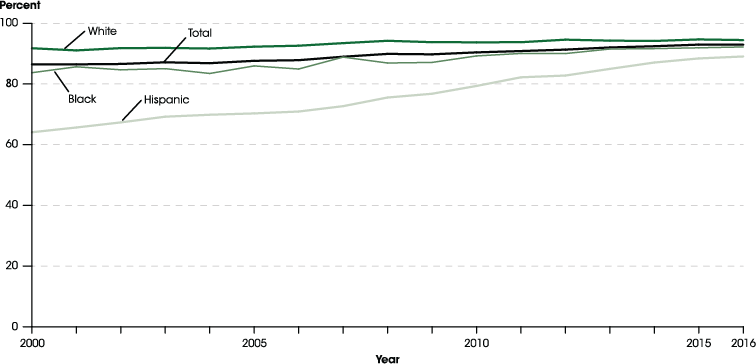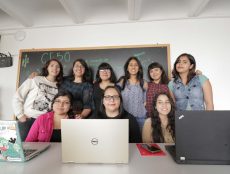
Articles
K-12
Students of Color Were Closing the Achievement Gap. COVID-19 Is Projected to Erode that Progress.
By Henry Kronk
July 20, 2020
In March, COVID-19 turned American education on its head. The nearly overnight switch to online learning was seamless for the few with experience with online learning. For everyone else, it was jarring. While the digital divide had been all but closed in brick-and-mortar schools, it was still far too wide for both students and teachers at home. Many have speculated and projected learning losses for large swaths of American students. But, increasingly, it’s clear that students of color are affected at higher rates than others. After decades of gains by Black and Latino students in high school achievement and graduation, many wonder how far progress is going to walk back.

Students of Color Participate Less in Online Learning
Earlier this month, the Los Angeles Unified School District (LAUSD) published a landmark study investigating the digital learning habits of its students from March 16 to May 22.
The district uses the learning management system Schoology, and they were able to get detailed information regarding how learners participated in remote classes. (For example, researchers could see when students initiated a session, accessed content, completed assignments, and more.)
Researchers found that students of color, students with disabilities, and those that live in low-income neighborhoods participated significantly less than their peers. At the middle school level, 14% of Black students and 10% of Latino students did not log on to Schoology once during the period of the study.
Only 60% of all students were active to some degree each day. Weekly participation among Black high school students peaked at 71%. For Latino students, it was 73%.
These findings support an earlier survey of 400 LAUSD parents by the advocacy group Speak Up. They polled parents to see how much live online interactions their kids were getting from their teachers. Students of color received significantly less than their White peers. 10.94% of Black parents and 16.51% of Latino parents said their child never received any live online instruction.
How Will COVID-19 Affect Learning?
It will be years before we can accurately measure the effect that COVID-19 has had on learning. However, researchers have begun to model and predict likely outcomes. In a working paper, researchers from Brown University projected that students left the 2019-20 school year with 63%-68% of the learning gains in reading compared to a typical year. With math, it was much worse: 37%-50% of normal gains.
The researchers speculate that losses will be worse for students of color. Native, Black, and Latino Americans are affected by COVID-19 at much higher rates than their Asian and White counterparts.
“Furthermore,” the authors write, “the so-called “digital divide” in technology and internet access by race/ethnicity and socioeconomic status likely contributes to greater inequalities during the COVID-19 pandemic …”
Researchers at McKinsey and Company modeled three different scenarios for learning losses and gains. They estimate that average remote learning results in three-four months of learning losses over the school year. In a scenario in which in-class learning doesn’t resume until January 2021, they estimate that learners of color, and especially low-income students, will lose far more months of academic gains than Whites. They project that Black students will lose 10.3 months, Latino students will lose 9.2 months, and low-income learners will lose over a year of learning.
The Achievement Gap Was Closing. What Will Happen to Those Gains?
These losses may occur after a time when the high school achievement gap was closing in the U.S. In 1972 (the first year that the National Center of Education Statistics began compiling this data), learners of color had abysmal high school completion rates. For Black adults aged 18-24 72.1% earned a high school diploma. For Latinos, it was 56.2%. Over the following decades, however, those rates steadily climbed. In 2016, 92.2% of Black learners aged 18-24 had earned a high school diploma, while 89.1% of Latino students had done the same. White (94.5%) and Asian (96.8%) rates remained higher, but the gaps were a fraction of what they were.
These gains are now in jeopardy.
The McKinsey researchers conclude their report, writing, “These numbers are sobering—but they are not inevitable. If the United States acts quickly and effectively, it may avoid the worst possible outcomes. But if there is a delay or a lack of commitment, COVID-19 could end up worsening existing inequities.”
Featured Image: Joseph Perez, Unsplash.









No Comments